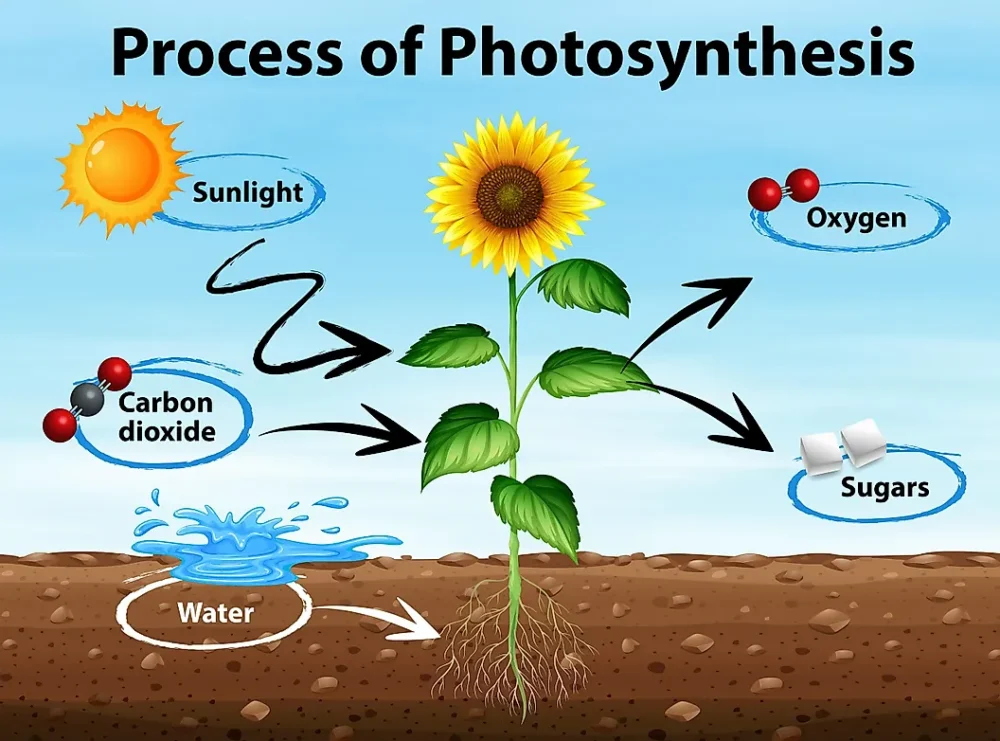Photosynthesis is an amazing process that occurs in plants, algae, and some bacteria. Plants have a cool way of making their own food called photosynthesis. They use a green pigment called chlorophyll found in their leaves. This chlorophyll grabs sunlight and turns it into energy, which helps the plant make food from carbon dioxide and water. It’s like the plant’s own cooking process!
What is Photosynthesis?
Photosynthesis Definition
Photosynthesis is the process by which plants create their own food using sunlight, chlorophyll (a green pigment in leaves), carbon dioxide, and water. During this process, the energy from sunlight is captured by chlorophyll and used to convert carbon dioxide and water into glucose, a form of sugar that serves as the plant’s food source.
Here’s a breakdown of the steps involved
1. Capture the Light
- Tiny structures inside plant cells called chloroplasts contain chlorophyll, a green pigment that acts like a solar panel. When sunlight hits chlorophyll, it gets energized and captures the energy.
2. Splitting Water
- Using this captured energy, the plant breaks down water molecules into oxygen and hydrogen ions.
- The oxygen is released into the atmosphere for us to breathe, while the hydrogen ions are used in the next step.
3. Fixing Carbon Dioxide
- Carbon dioxide from the air enters the plant through tiny openings called stomata.
- The hydrogen ions from water splitting combine with the carbon dioxide to form glucose, a simple sugar that provides energy for the plant.
4. Building Food
- Glucose can be used for immediate energy or stored for later use as starch or other complex carbohydrates.

The Equation
You can summarize the whole process with this equation:
6CO₂ + 6H₂O + light energy → C₆H₁₂O₆ + 6O₂
Read More about the key findings of the Equation or Formula of Photosynthesis
Importance of Photosynthesis
- Photosynthesis is the base of all life on Earth! It provides the food and oxygen that animals and other organisms need to survive.
- It plays a crucial role in regulating the Earth’s climate by removing carbon dioxide from the atmosphere.
- It’s a renewable source of energy and can be used to produce biofuels.
Fun Facts
- A single mature tree can produce enough oxygen for two people in a year!
- The Amazon rainforest is known as the “lungs of the Earth” because it produces a large amount of oxygen through photosynthesis.
- Some scientists are studying ways to use artificial photosynthesis to create clean energy from sunlight and water.
Latest post on Biology:

